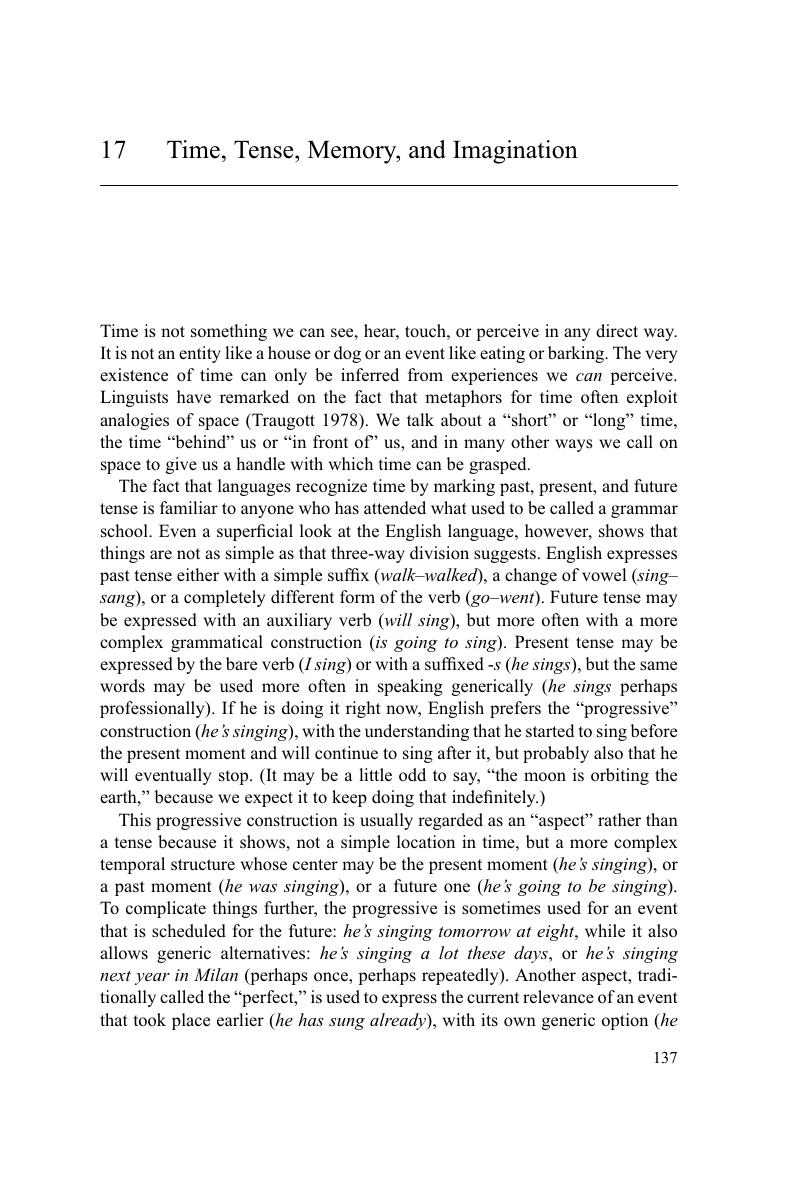Book contents
- Thought-Based Linguistics
- Thought-Based Linguistics
- Copyright page
- Epigraph
- Contents
- Acknowledgments
- Prologue
- Part I Preliminaries
- Part II Thoughts and Their Properties
- Part III Verbalization Illustrated
- Part IV Related Issues
- Part V Common Ways of Orienting Thoughts
- 15 Small Numbers and Subitizing
- 16 Thoughts and Gender
- 17 Time, Tense, Memory, and Imagination
- 18 Relating Ideas to Reality
- Part VI The Emotional Component of Thoughts
- Epilogue
- References
- Index
17 - Time, Tense, Memory, and Imagination
from Part V - Common Ways of Orienting Thoughts
Published online by Cambridge University Press: 13 April 2018
- Thought-Based Linguistics
- Thought-Based Linguistics
- Copyright page
- Epigraph
- Contents
- Acknowledgments
- Prologue
- Part I Preliminaries
- Part II Thoughts and Their Properties
- Part III Verbalization Illustrated
- Part IV Related Issues
- Part V Common Ways of Orienting Thoughts
- 15 Small Numbers and Subitizing
- 16 Thoughts and Gender
- 17 Time, Tense, Memory, and Imagination
- 18 Relating Ideas to Reality
- Part VI The Emotional Component of Thoughts
- Epilogue
- References
- Index
Summary

- Type
- Chapter
- Information
- Thought-based LinguisticsHow Languages Turn Thoughts into Sounds, pp. 137 - 150Publisher: Cambridge University PressPrint publication year: 2018

